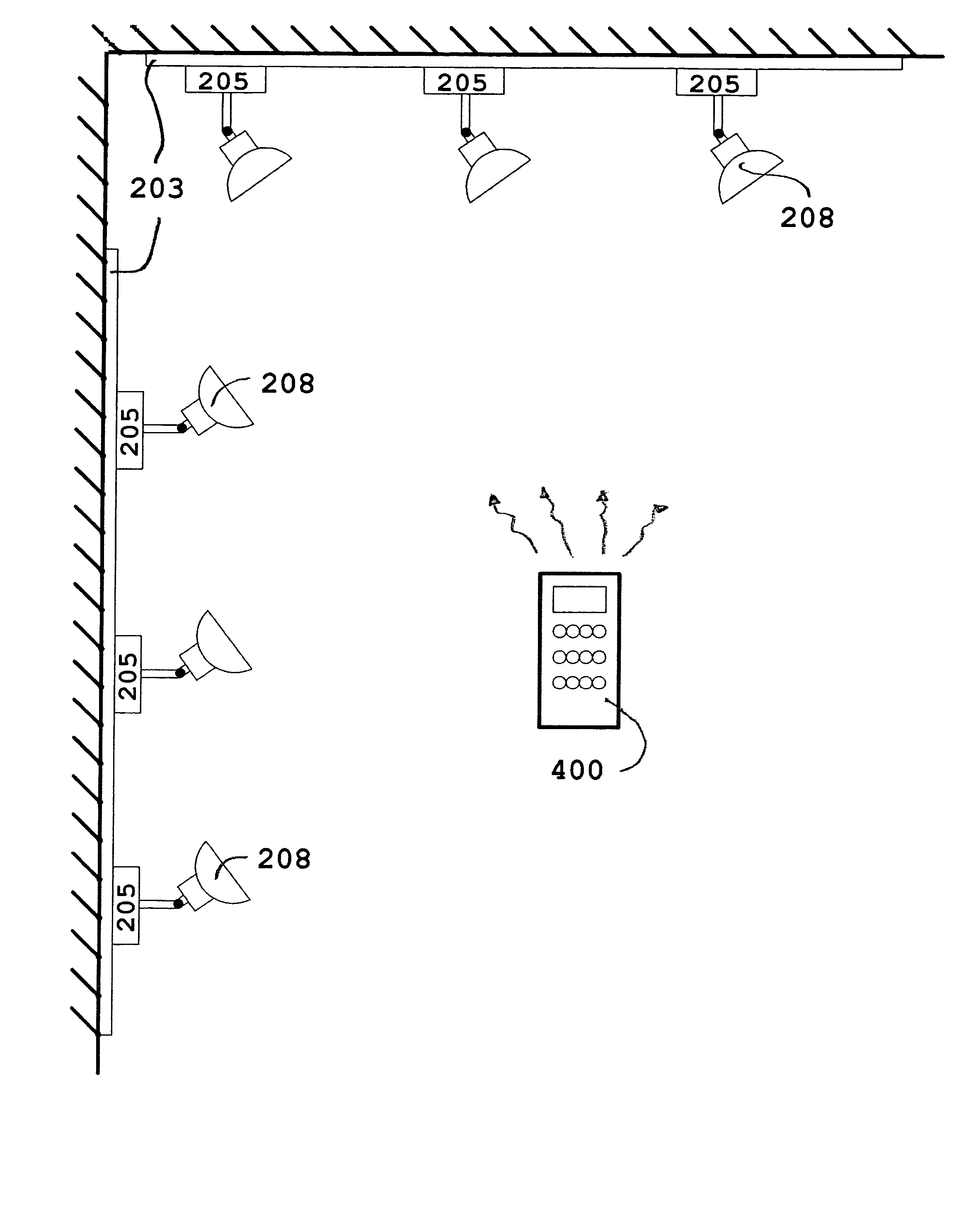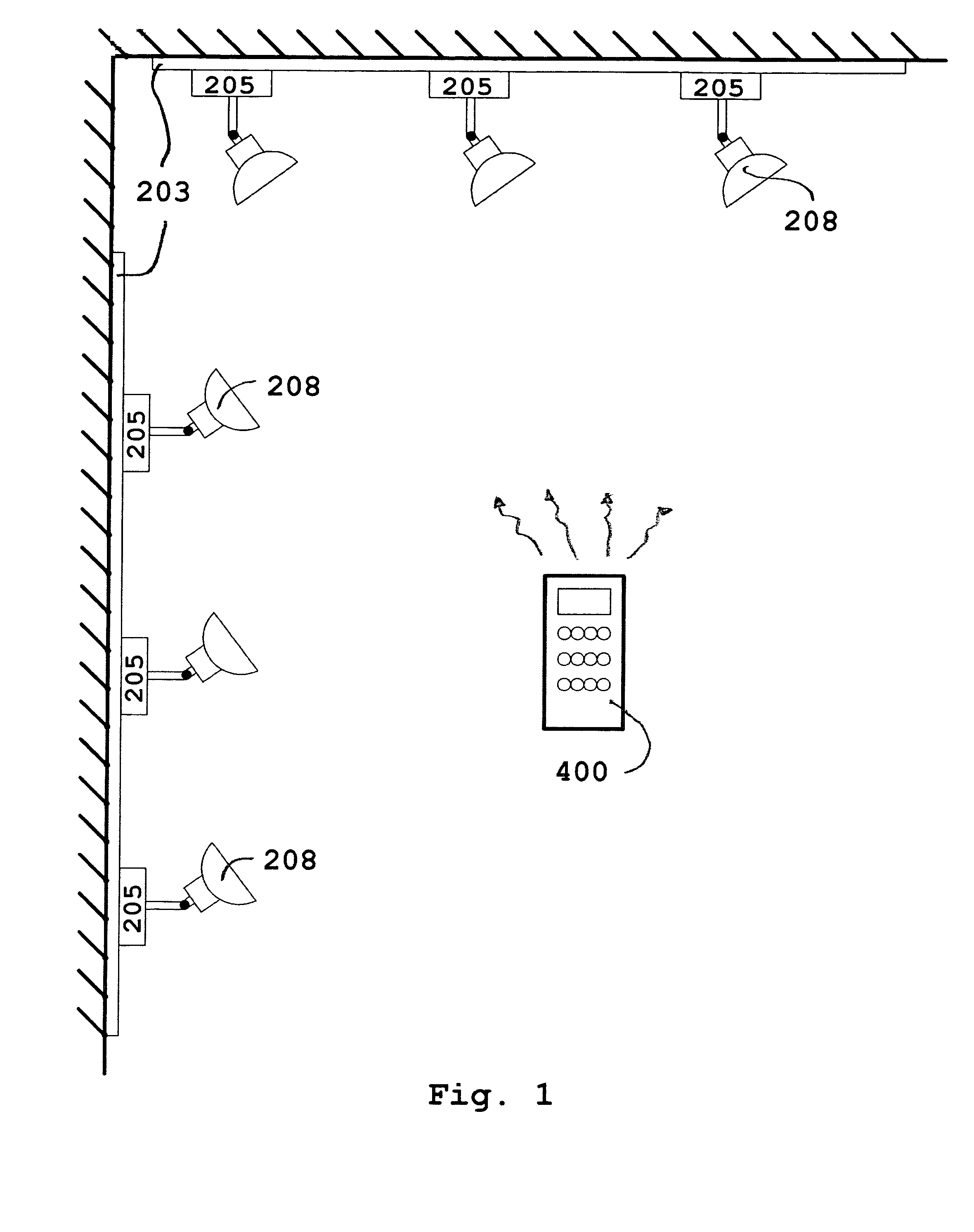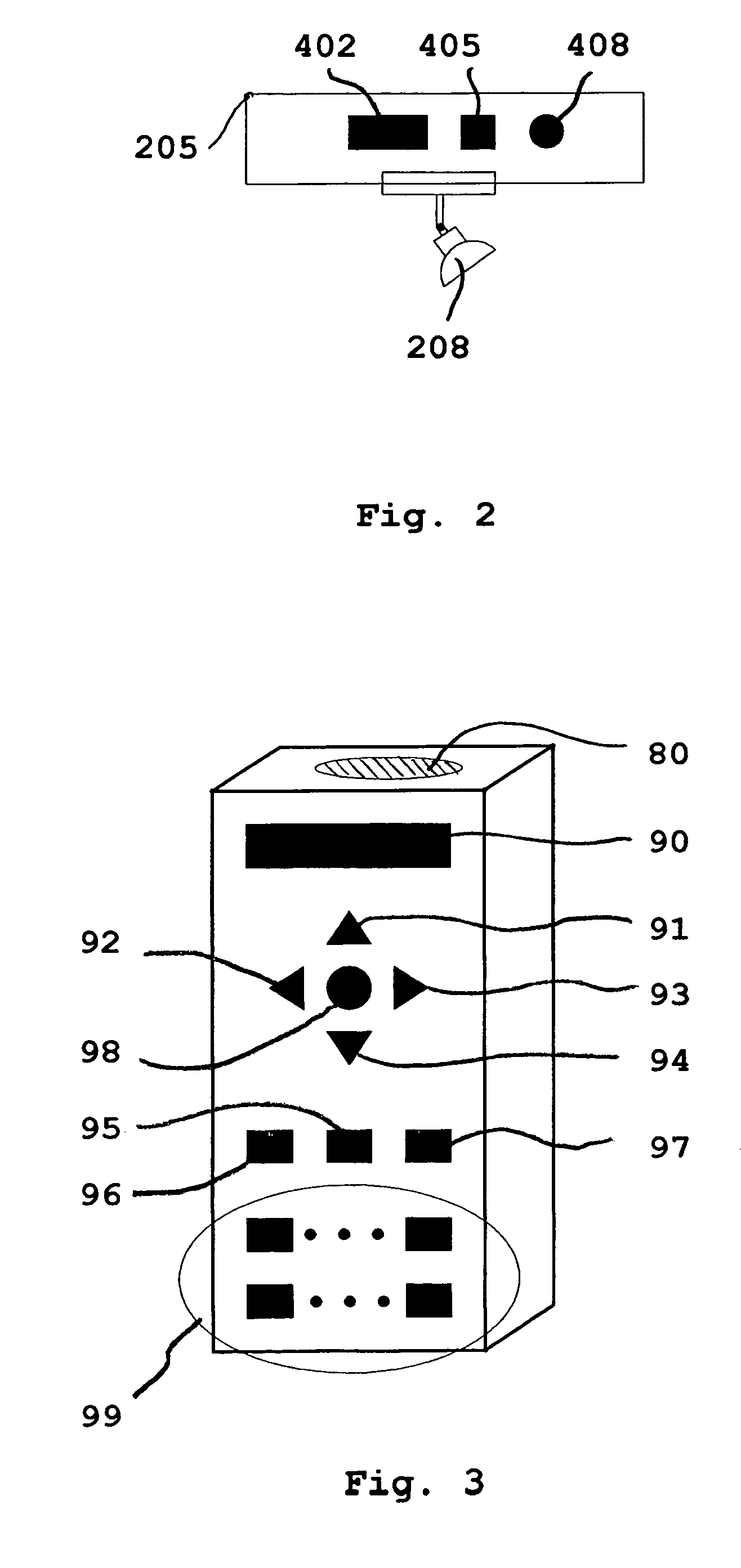Remote controlled intelligent lighting system
a remote control and intelligent lighting technology, applied in the direction of electric controllers, ignition automatic control, instruments, etc., can solve the problems of manual setting of devices, physical size, and high cost of manual setting
- Summary
- Abstract
- Description
- Claims
- Application Information
AI Technical Summary
Benefits of technology
Problems solved by technology
Method used
Image
Examples
Embodiment Construction
[0039]As represented in FIG. 1, the layout of a control system, of the type used in the invention, comprises an infrared or radio frequency generating remote control device 400 used to sequentially transmit data to all or any one of the addressable lighting devices 205, each one containing a light source 208 used to illuminate an area. These devices 205 are to be mounted in electrical boxes in walls or ceilings. Another variation is that they can be mounted in existing track lighting systems 203 manufactured by a variety of manufacturers such as Lutron, Lightolier, Leviton, and many others, effectively converting a simple lighting system into a sophisticated, innovative and individually addressable system which can now enable the user to create special effects by adjusting different levels of intensity of each one of the lights in the same lighting track. A particular advantage of this retrofit installation is that existing wiring can effectively be used, avoiding the expense of run...
PUM
 Login to View More
Login to View More Abstract
Description
Claims
Application Information
 Login to View More
Login to View More - R&D
- Intellectual Property
- Life Sciences
- Materials
- Tech Scout
- Unparalleled Data Quality
- Higher Quality Content
- 60% Fewer Hallucinations
Browse by: Latest US Patents, China's latest patents, Technical Efficacy Thesaurus, Application Domain, Technology Topic, Popular Technical Reports.
© 2025 PatSnap. All rights reserved.Legal|Privacy policy|Modern Slavery Act Transparency Statement|Sitemap|About US| Contact US: help@patsnap.com



